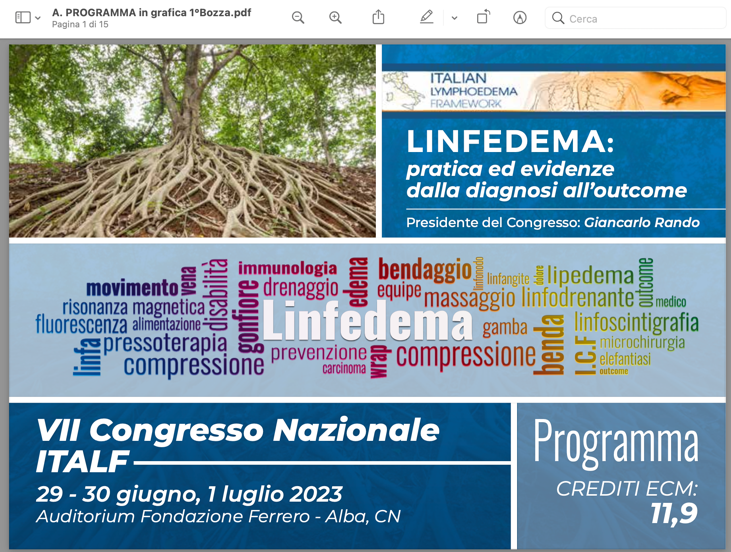
There continues to be great interest in Lymphology in Italy (and beyond). This was demonstrated by the approximately 400 participants at the 7th ITALF National Congress, held in Alba (Cuneo) on 29 and 30 June and 1 July of this very hot summer.
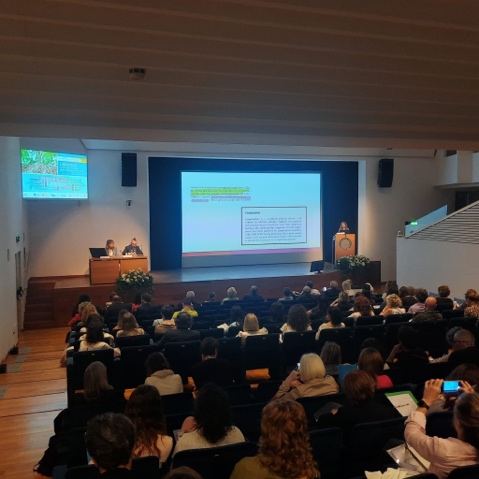
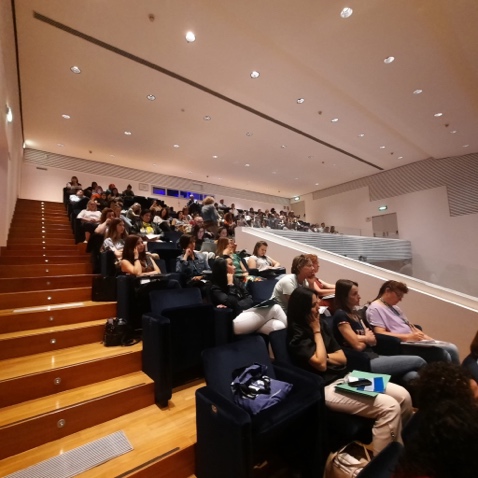
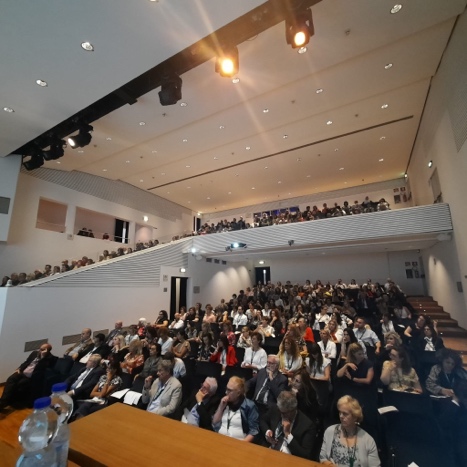
In the splendid ‘Location’ of the Aula Magna of the Ferrero Foundation, a series of very intense sessions took place with, on the sidelines (so to speak), 8 work-shops that touched on many of the salient aspects of the pathologies of the lymphatic system and Lymphedema, namely: ‘Role of Apo-lactoferrin in Cream Liposomes in Lymphatic Drainage Massage’, ‘A Yarn for Every Edema’, ‘Deep Oscillation Therapy in Lymphedema’, ‘ICF’, ‘Compression Therapy in Lymphedema: commensuration of therapy according to an algorithmic type procedure’, ‘Lymphangites and Lymphatic Ulcers (wound care)’, ‘Lymphofluorescence’ and ‘Deep Oscillation Therapy in Lipedema’.
After a presentation of the Congress by the Organizer Giancarlo Rando, in the presence of the General Director of the Local Health Authority, on the afternoon of June 29 the writer illustrated the association’s activities carried out in 2022 and those in part already carried out and in another part scheduled for the current year. It was then the turn of Christine Moffat who, on behalf of the ILF, illustrated the initiatives that are continuously taken in favor of patients, emphasizing the close collaboration with the Italian Framework.
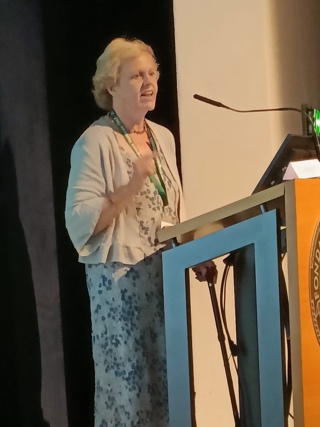
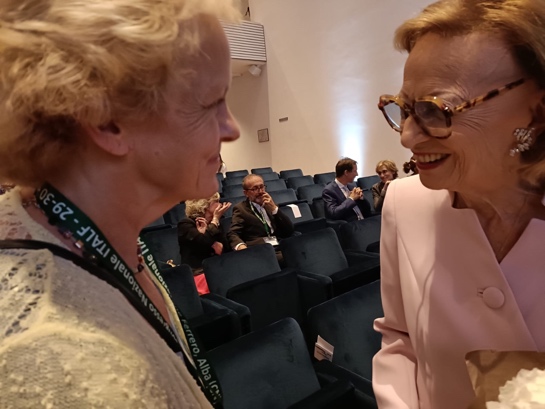
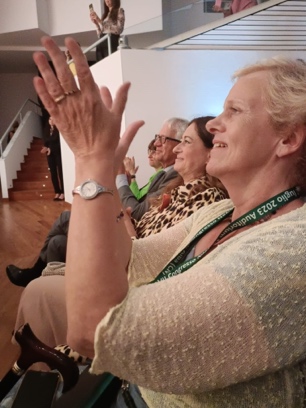
Rando, Roccatello and Ortega then reported some of the epidemiological data, both interesting primary and secondary pathologies, emphasizing the excellent ‘network’ organization present in the Piedmont Region regarding the two aspects (an example that should be taken up by all other and autonomous regions and provinces).
Alberto Macciò subsequently reported a series of information regarding the history of Lymphology, in Italy and in the World.
The Alba Congress was also characterized by the alternation of conventional sessions with round tables where the space for discussion among experts and in part with the participants allowed for an even greater interest in the issues expressed.
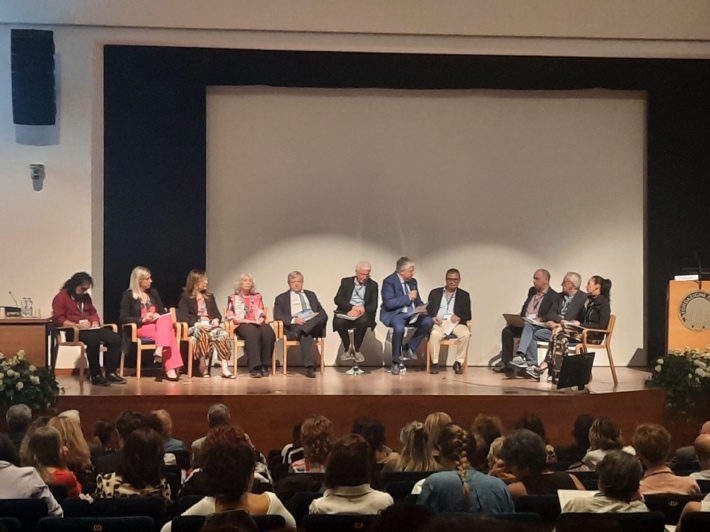
The first panel discussion closed the first congress evening with a debate on disability from lymphedema and out how, presented by Rando, Fiaschi, Lione, Lanfranco and Troncon with a final summary by Maurizio Ricci who highlighted how such pathologies, as observed by all the speakers, determine complex disabilities not only in the somatic sphere but also in the psychic one already by the simple fact of being, by definition, chronic.
Friday morning opened with the two sessions (in the parallel room) on communications and posters.
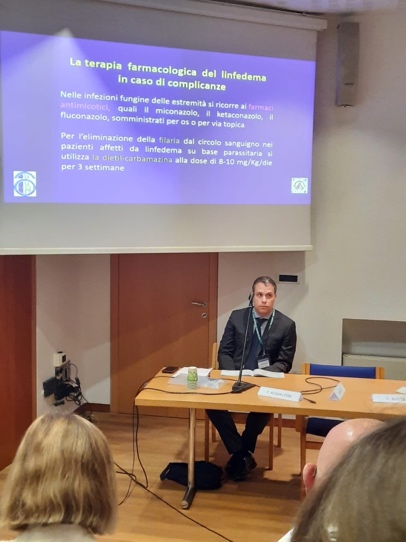
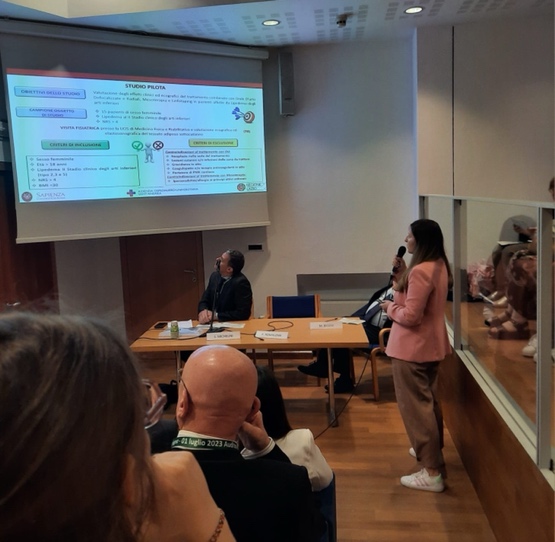
The topics covered were varied and spanned the entire scope of diagnostic, therapeutic, and organizational approaches: from drug therapy to histopathology with clinical indications, from surgical therapy to mechanical physical therapy, from organization of care at the outpatient level to inpatient rehabilitation, from new therapeutic approaches (e.g., with mononuclear cells) to prevention, education, monitoring, and measurement of ‘out come.
In the Auditorium, the opener addressed a miscellany of topics ranging from sports, activity, and exercise in Lymphedema to phlebostatic ulcers, radiation therapy and lymphedema, and clinical nutrition.
This was followed by a panel discussion aimed at the performance and interpretation of the lymphoscintigraphic examination, with connections with Bourgeois from Brussels, Maccauro from Milan, and featuring Mango, Bellò, Onorato, and Villa. In particular, the different interpretations, according to the various experiences, attributed to the deep circle in the role of the genesis of both primary and secondary Lymphedema resurfaced, and the canons of Bourgeois’ technique were reiterated, which, to date, is considered the most comprehensive from the point of view of clinical, therapeutic and prognostic indications.
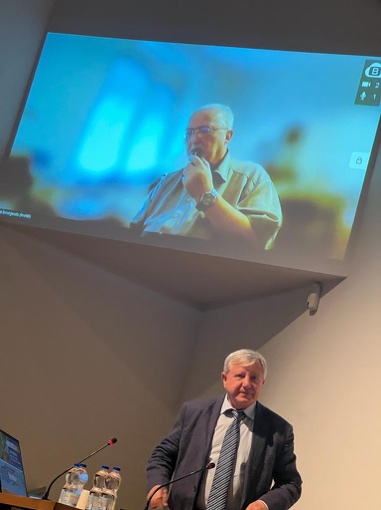
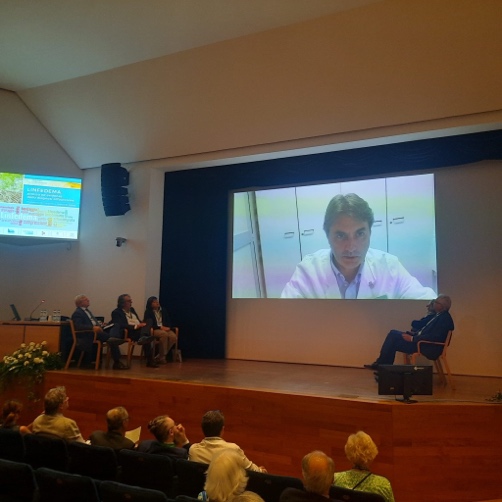
A subsequent panel discussion had as its theme the prevention of lymphedema in surgery and featured Gentileschi, Boccardo, Fasolis, Oderda and Seghesio who each developed their own ‘workhorse’ depending on the surgery practiced (breast, head-neck, primary lympha preventive technique).
A Magisterial reading by Corradino Campisi egregiously concluded the morning’s proceedings on June 30.
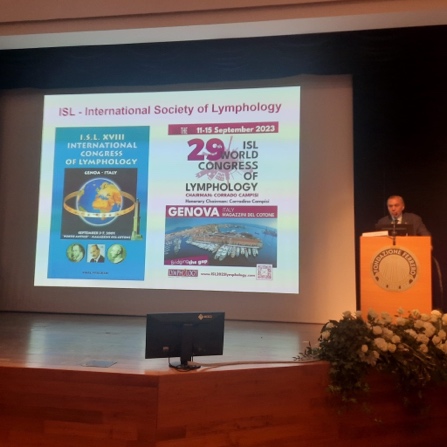
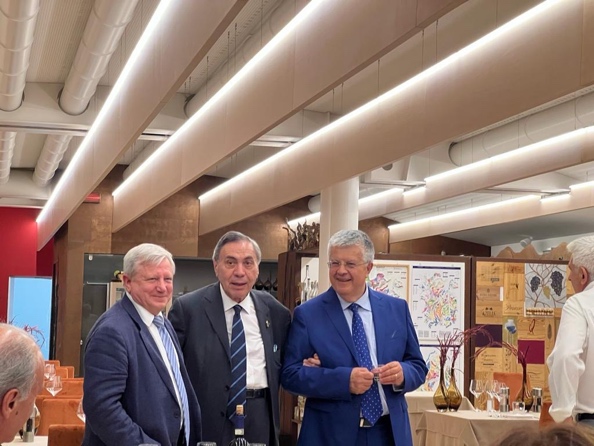
The so-called ‘lunch session’ entirely devoted to the elastic garment then took place, opened by the writer with a series of practical questions.
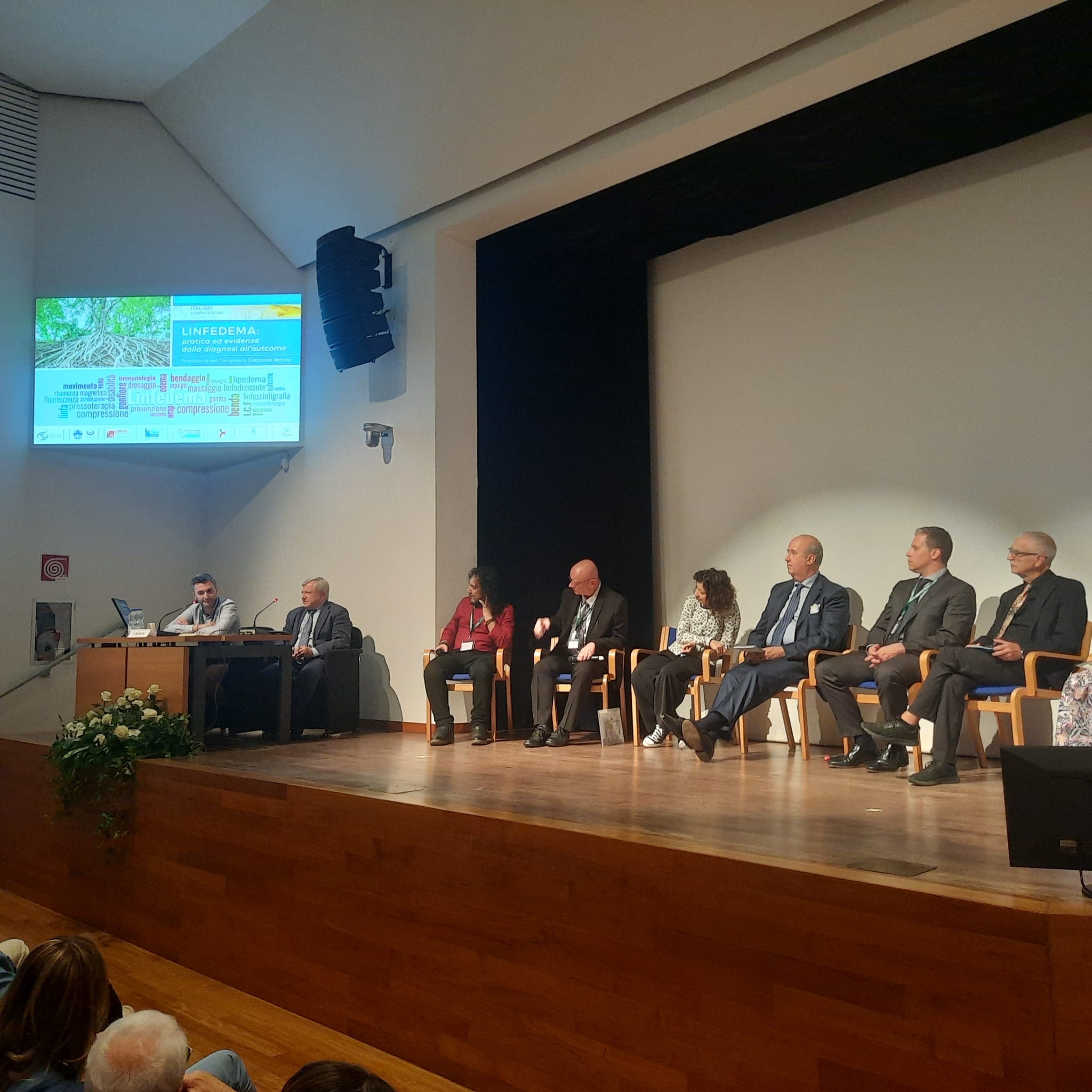
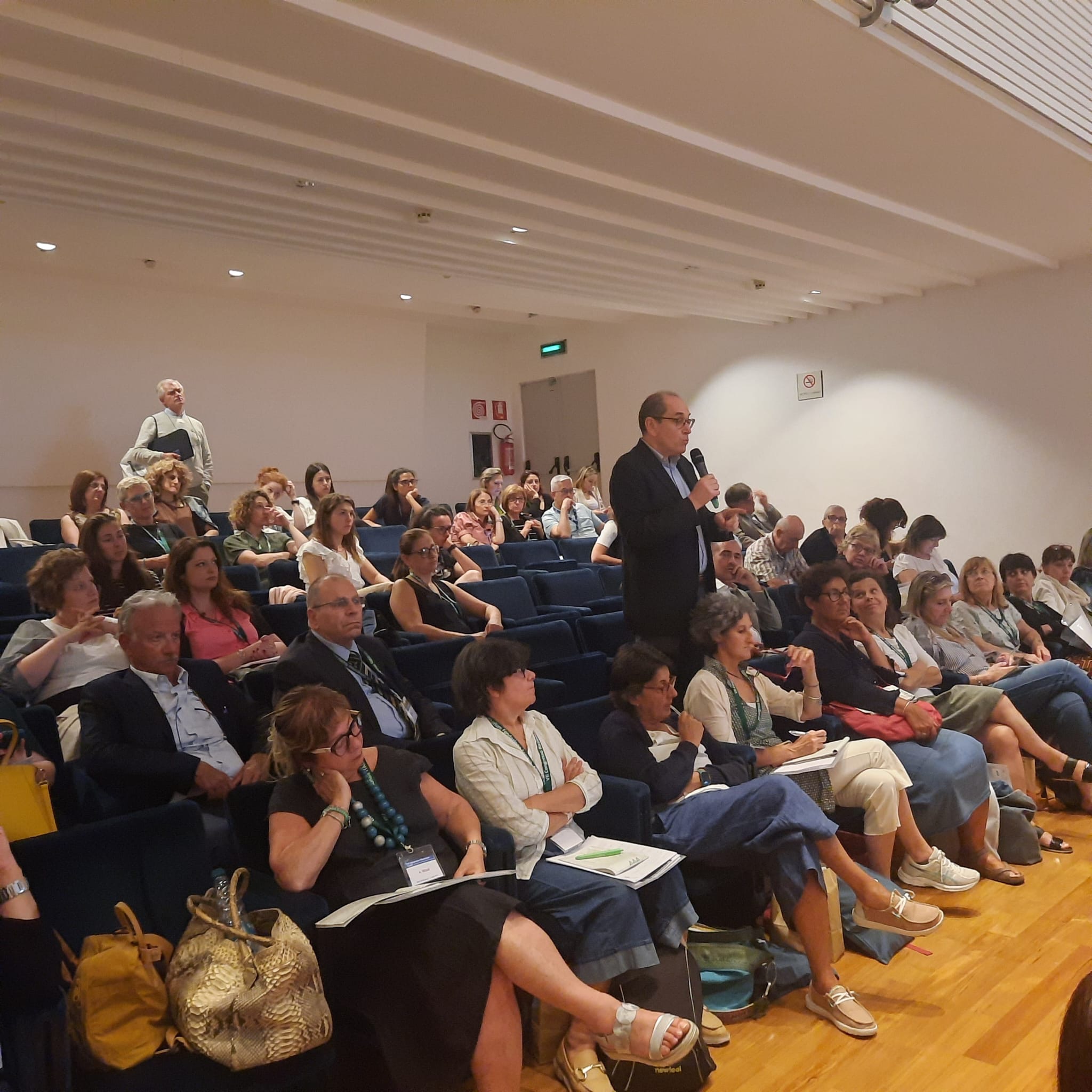
A lively discussion, in the presence of physicians, physiotherapists, orthopedic technicians, companies, and representatives of patients’ associations, revealed the considerable criticalities that, in a patchy manner, still affect the various regions, and practical suggestions also emerged that will be the subject of a forthcoming propositional document at the Ministry of Health (‘Position paper’). Among the many observations that emerged, one in particular struck more than others: why are the work of the physician, physiotherapist, and nurse recognized by the NHS being included in the LEAs and that of the orthopedic technician not? In some complex cases, specific measurements require up to an hour of time that is not calculated at all, as a cost, in the provision of the ‘custom-made’ garment. This aspect, too, needs appropriate correction, as does the possibility, on the part of the patient (as he does with the outpatient specialist or with the contracted or public physiotherapy outpatient center, judged most suitable to meet his needs), to be able to choose the health care and even the orthopedic technician (considering, moreover, the high number of negative tests that require corrections and consequent loss of time due to human errors due to less experience). System of ‘competition’ yes, but to be revised in substance!
Two other round tables then took turns in the afternoon: one on Multi-specialty instrumental diagnostics between scientific evidence and clinical practice, attended by Boccardo, Cestari, Belgrado, Cittadini, Macciò, Mander and Merli and, the second on the future of compression between innovations, technology and research, attended by Rando, Sciuscio, Belgrado, Farina, Levi, Mannello and Mazzolai.
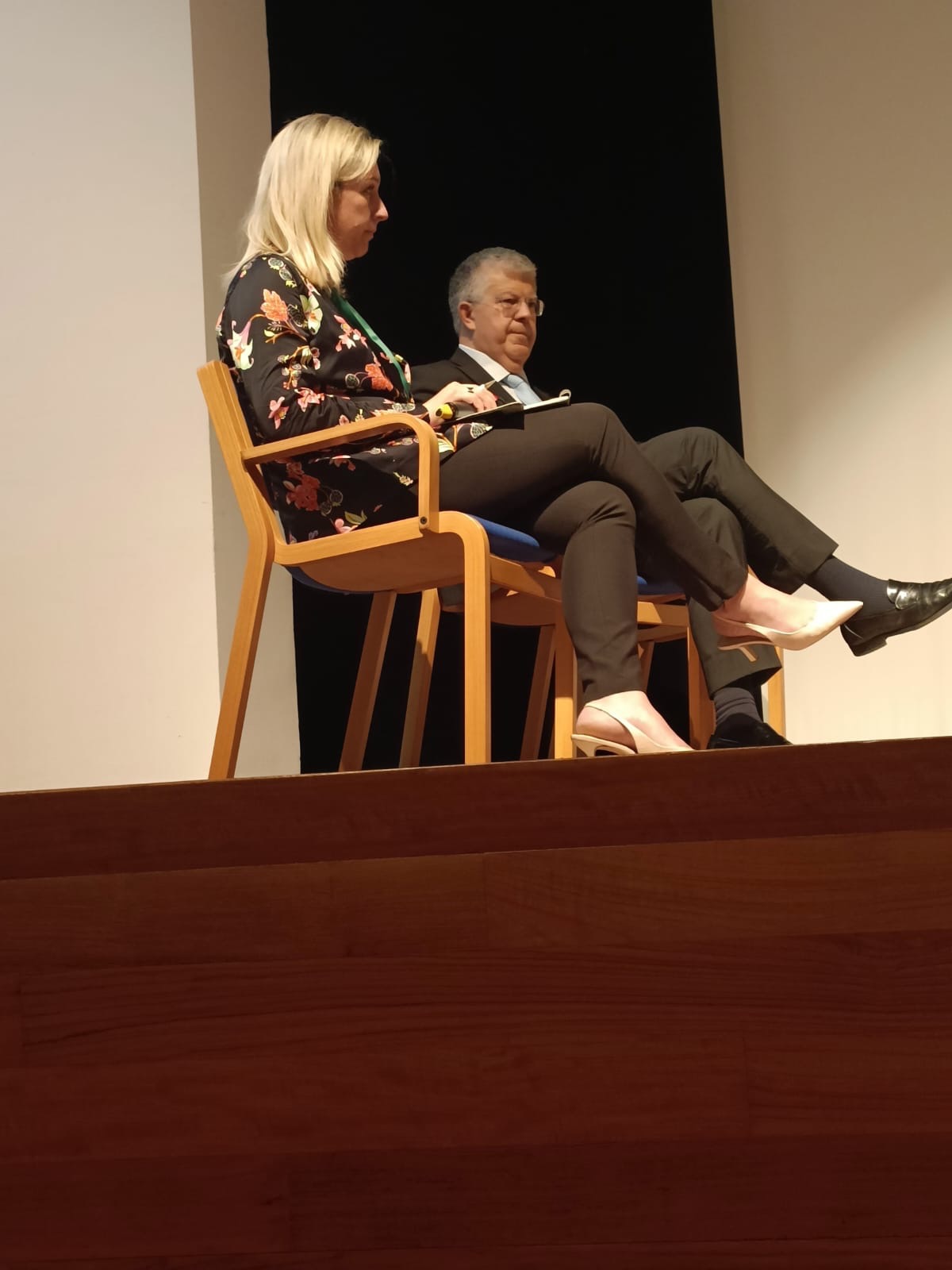
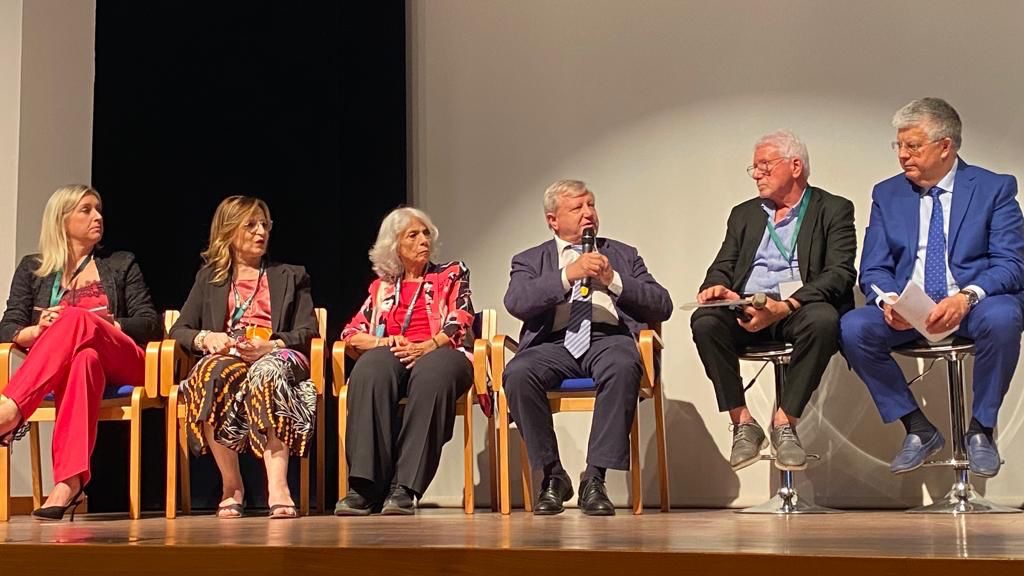
The congress sessions then concluded with the presentation of a series of special clinical cases, presented by Stasi, the writer, Rando, Da Cestari, Leone and Ricci.
At the end, after a welcome toast offered by the fashion designer Miroglio, a beautiful and moving ‘fashion’ presentation took place where, on the stage, in the presence of the participants, Mrs. Miroglio and Mrs. Ferrero (the Host of the magnificent venue that hosted the conference proceedings), more than twenty patients performed in an exhilarating succession of alternating garments delicately worn and displayed in a very vivid and varied range of colors and shapes. At the end the entire hall paid tribute in ‘standing ovation’ to the patients who had masterfully performed.
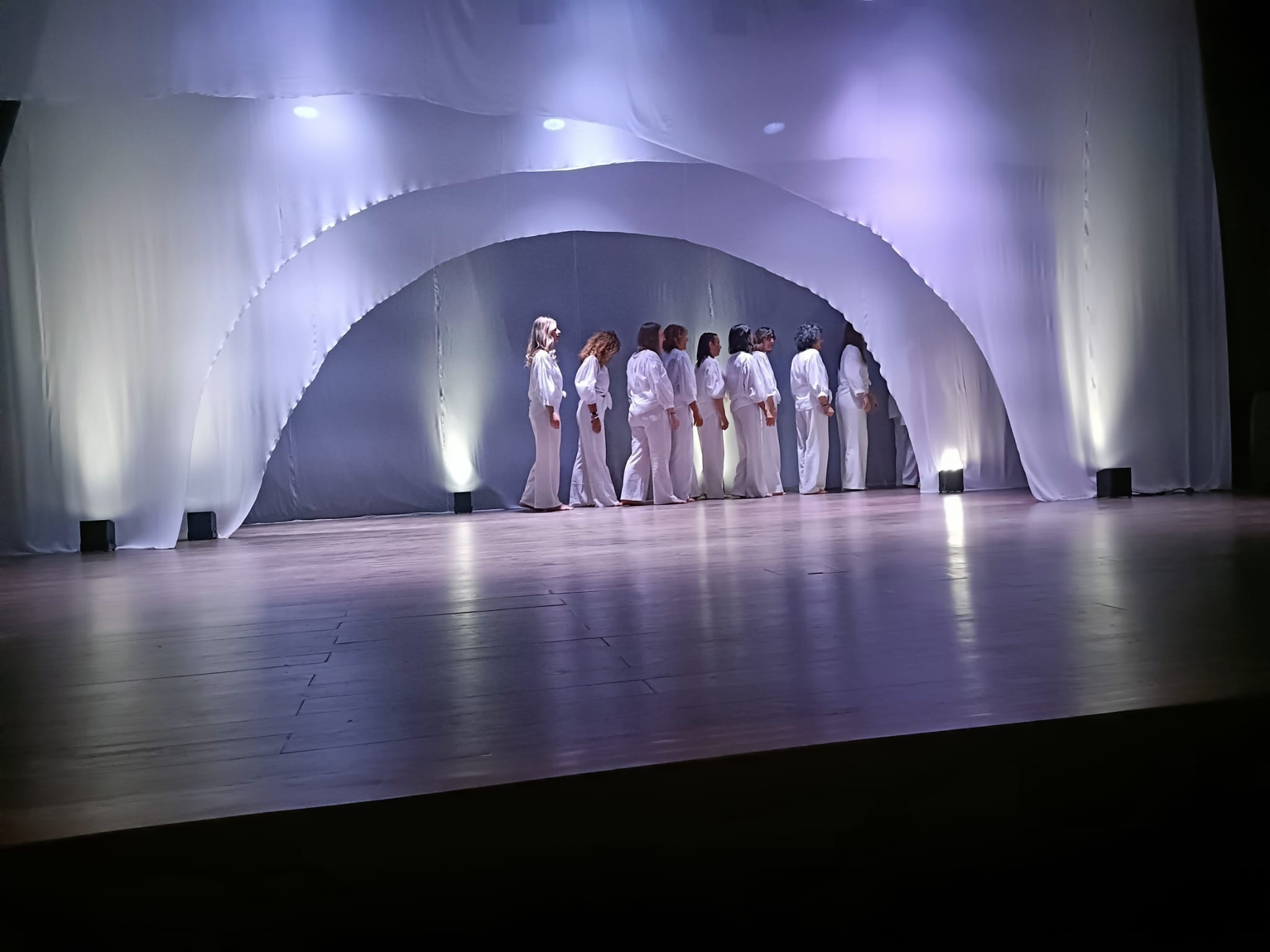
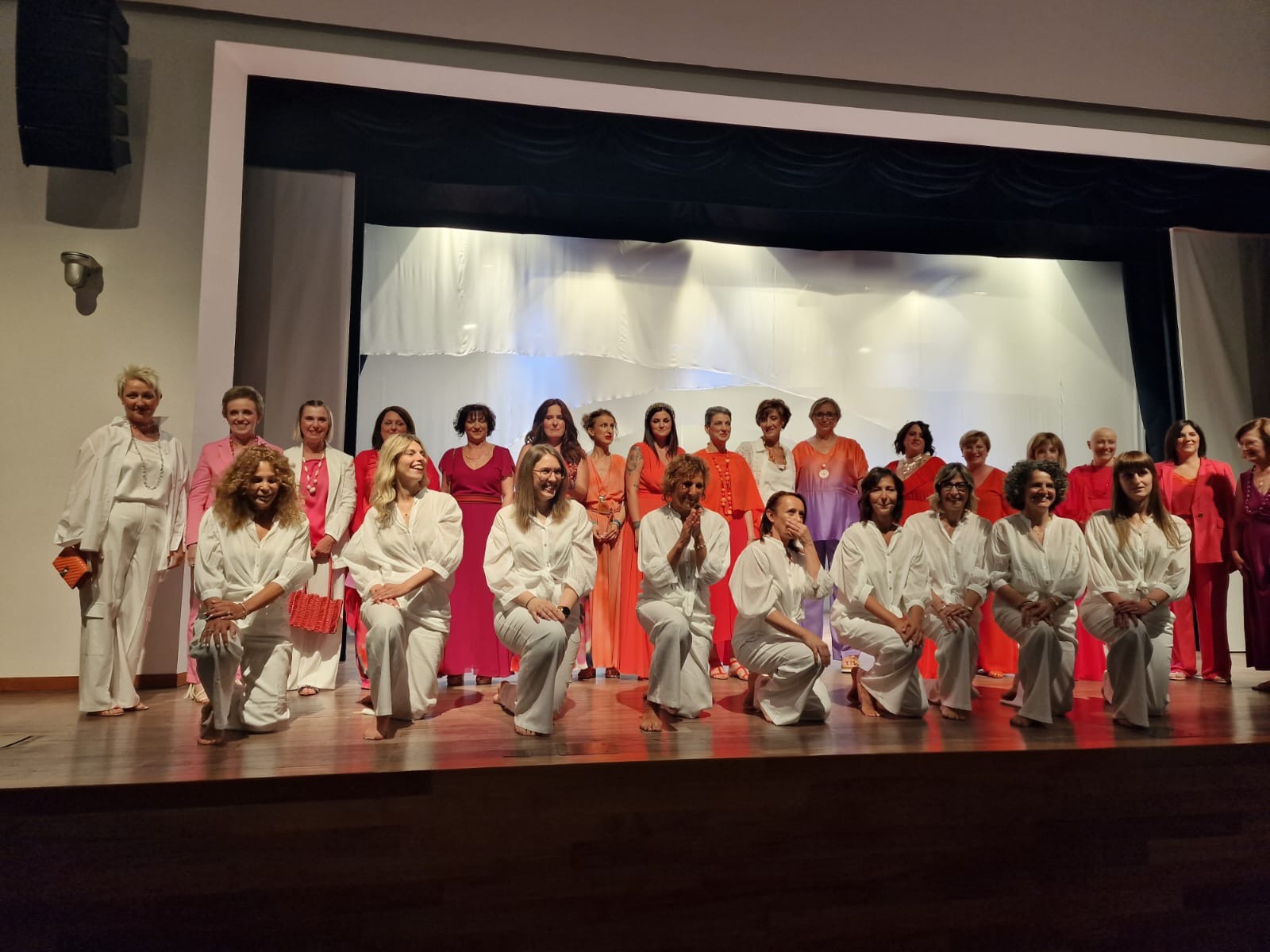
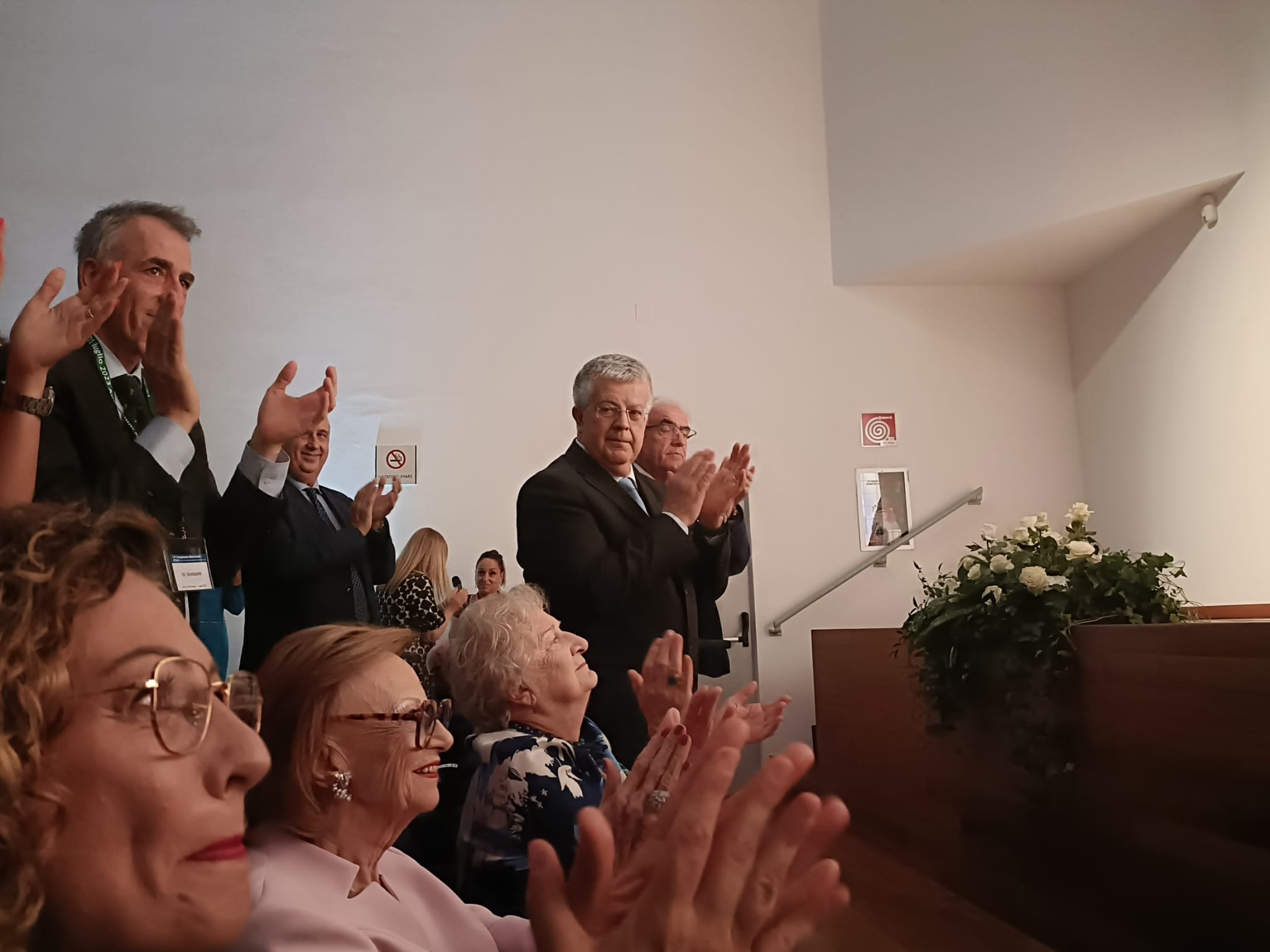
The morning of Saturday, July 1, began with an inter-societal session dedicated to complex edema attended by Romeo Martini (SIAPAV president), Giovanna Beretta (SIMFER president), the writer (representing ITALF), Roberto Di Mitri (president Italian Society of Phlebology), Tiziana galli (representing the Italian Physiotherapists Association) and Ferruccio Savegnago representing the SIMFER edema section.
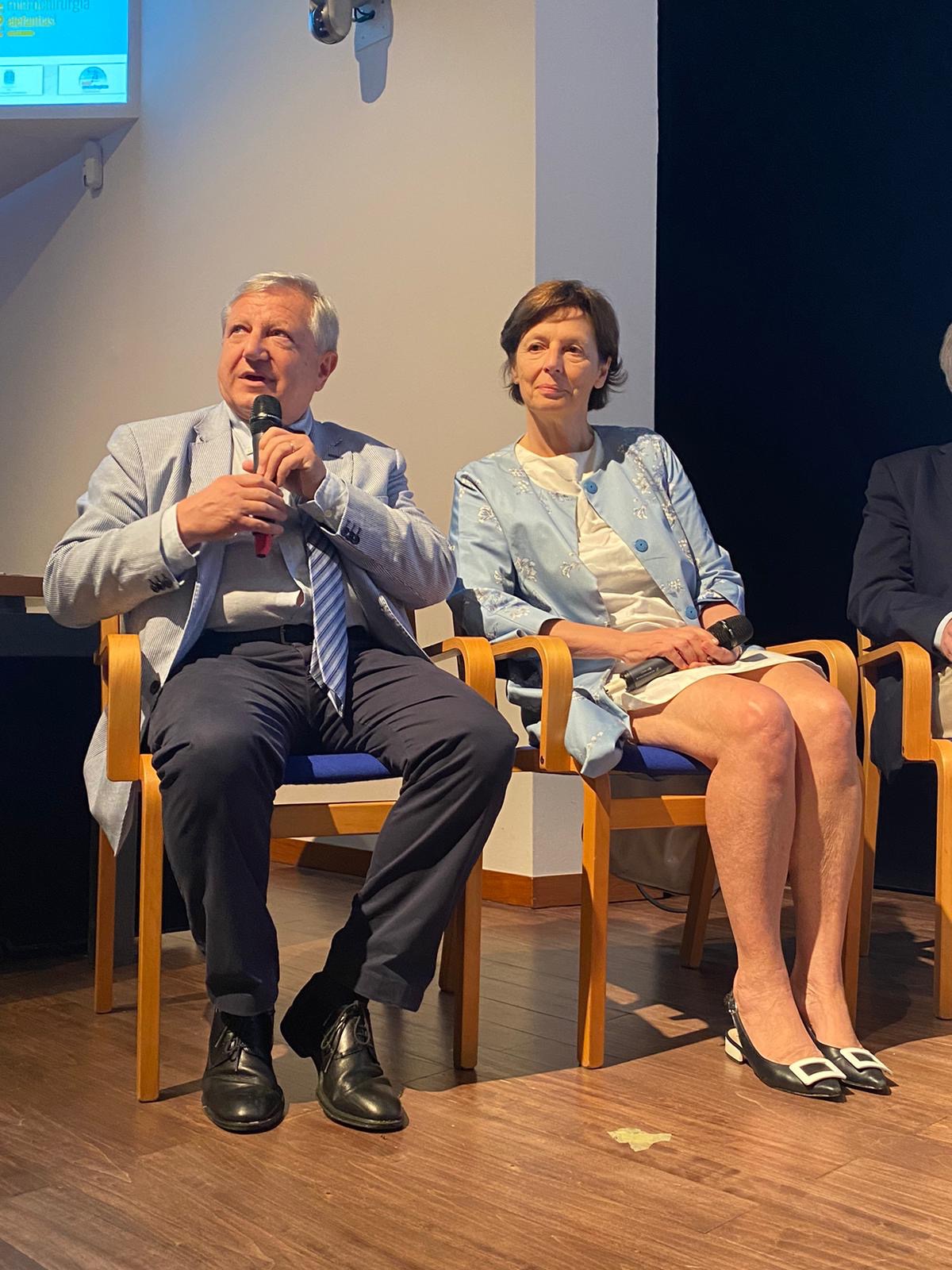
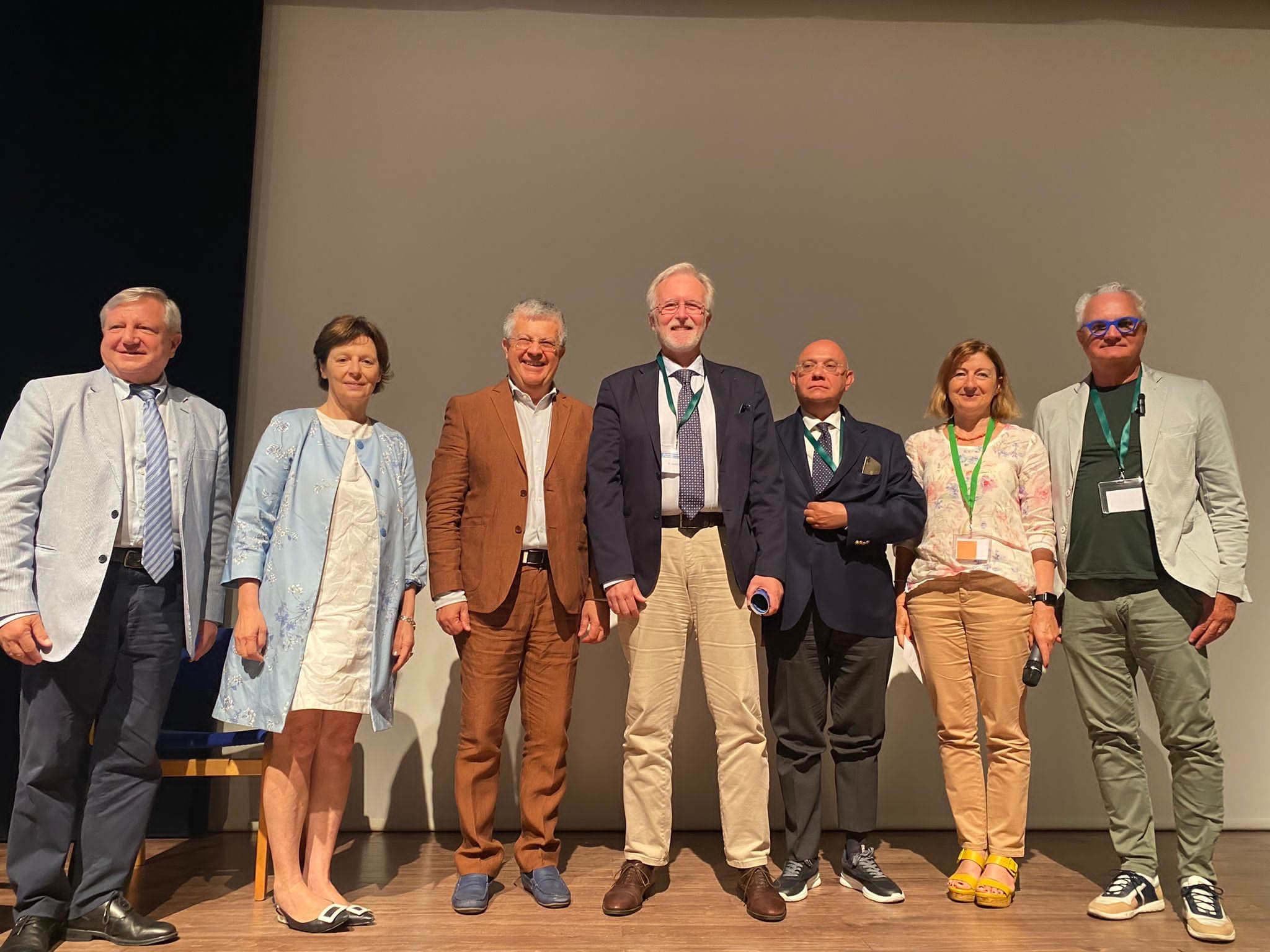
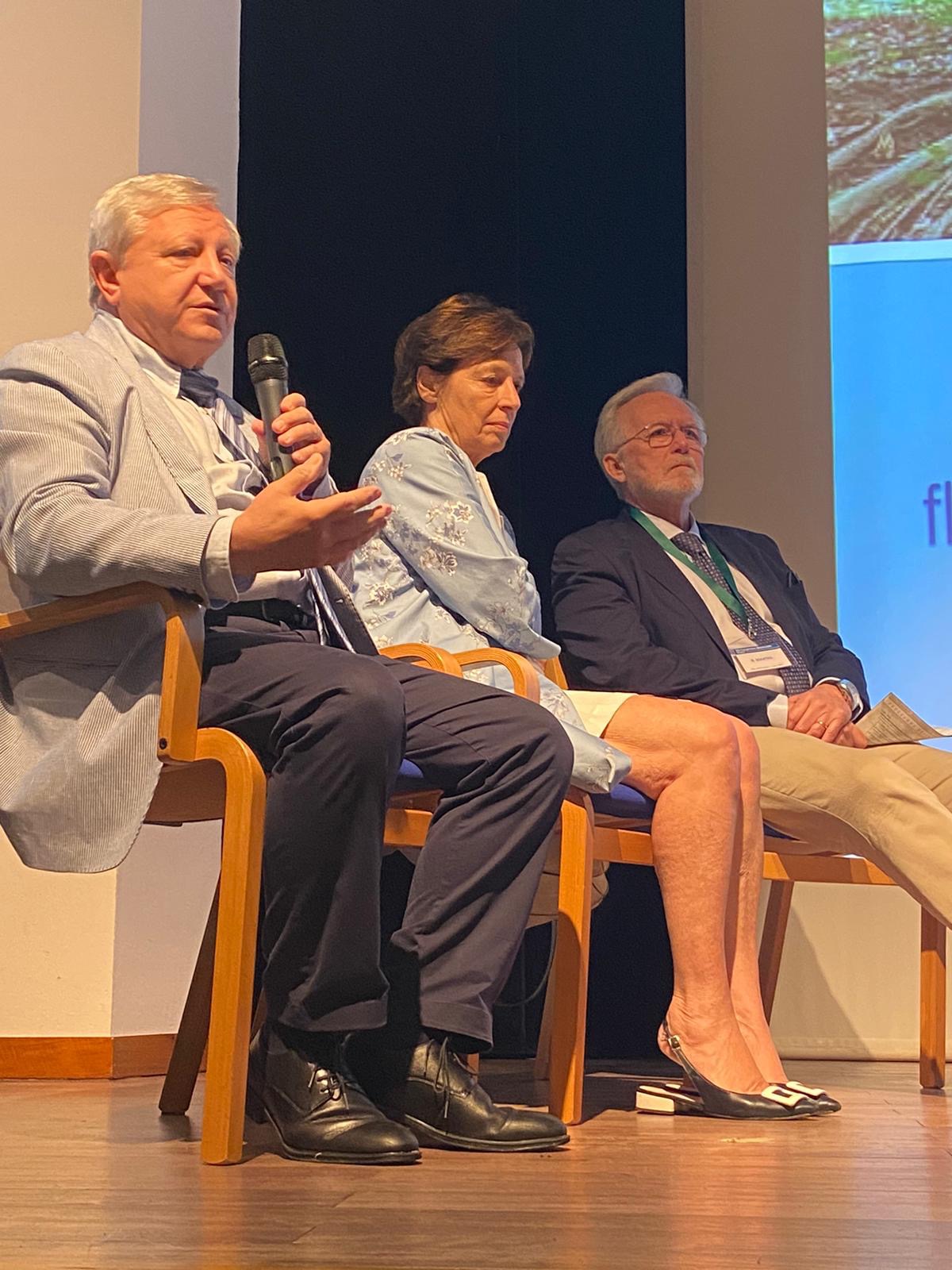
A very dense session on Lipedema then followed, divided into three sub-sessions: the first, opened by the writer (who moderated for the entire session together with Jean Paul Belgrado), dedicated to Research in which Saverio Cinti, Matteo Bertelli, Marina Cestari, and Roberto Cannataro spoke with interesting emerging novelties; the second, dedicated to the conservative approach, which was attended by, Valeria Giordano (representing the Lipedema Italia Onlus Patients’ Association), The physiotherapist Elettra Fiengo who described some therapeutic techniques including that of ‘deep massage’, Alberto Onorato and Serena Michelini with the presentation of all the conservative physical therapeutic options, currently used in physical medicine and rehabilitation. Corrado Cesare Campisi, Bruno Agostino, Stefano Gentileschi and Nicola Vaia then presented their experience with Liposuction techniques (Vaser, PAL, WAL) and the results in the medium term. Dalla Costa and Marabotto then mentioned possible nutritional interventions from the point of view of therapeutic contribution to such a complex morbid picture and still, unfortunately, little known in its pathogenesis.
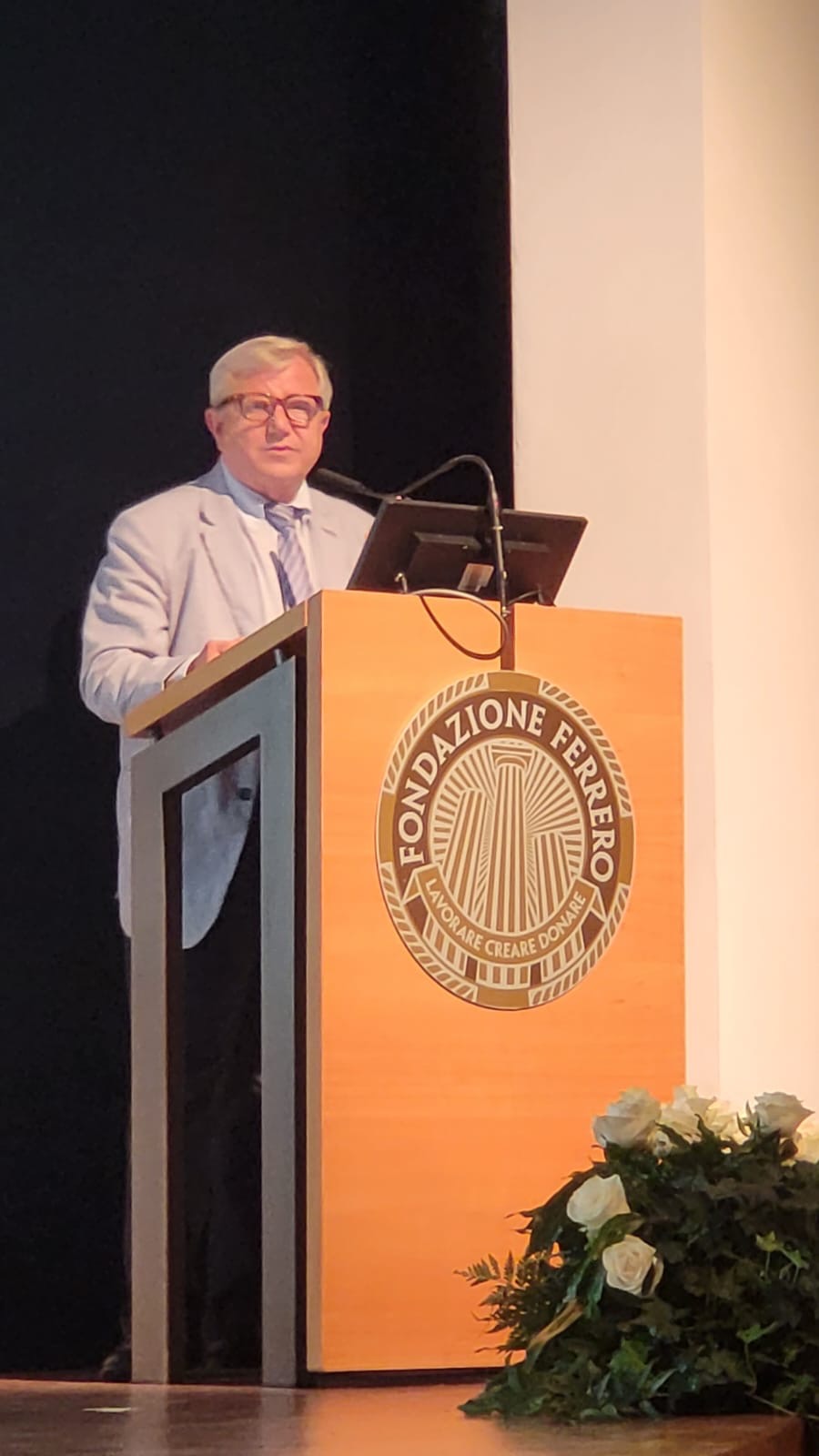
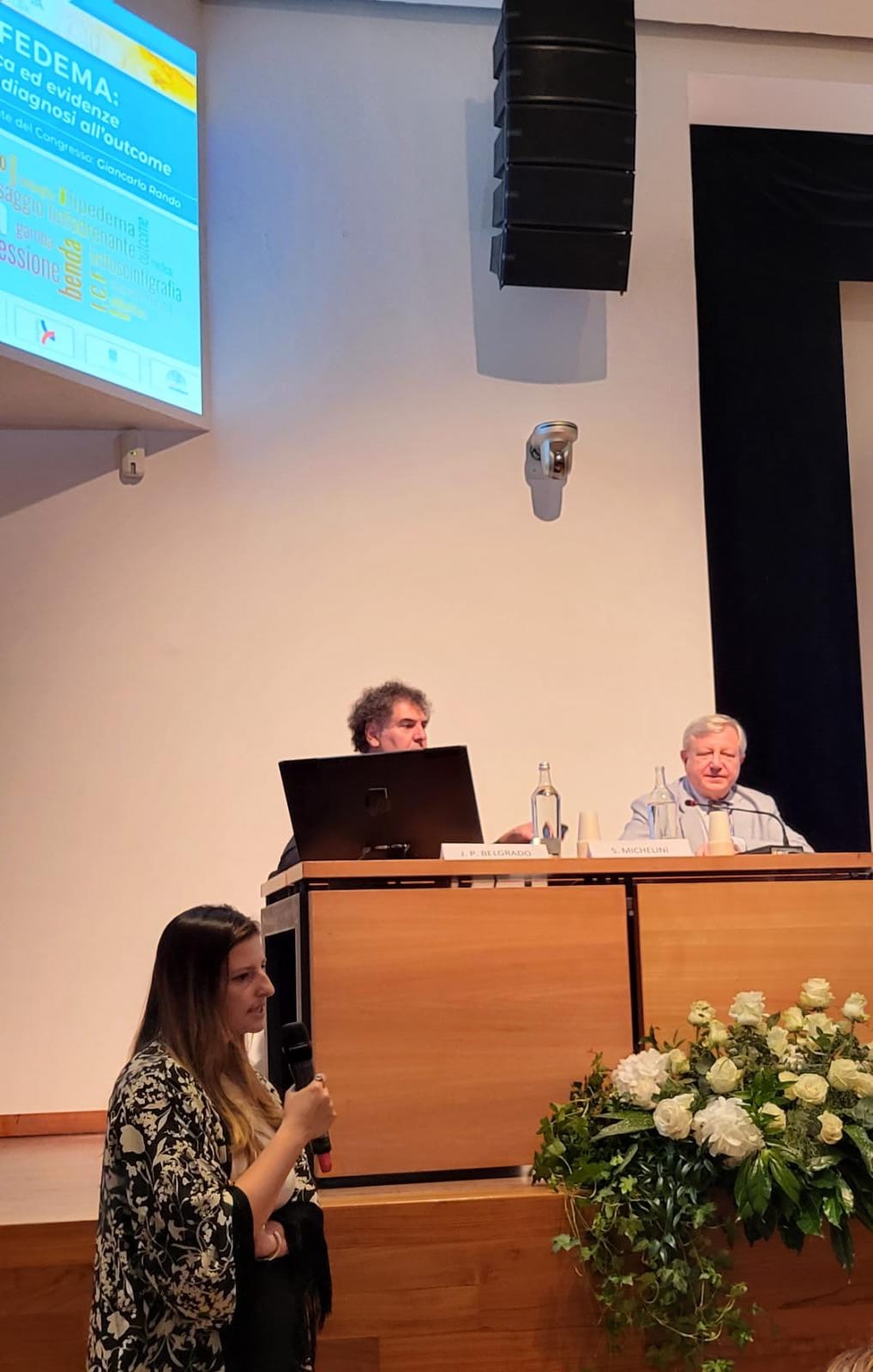
The General Assembly then concluded the Congress with appointments for the coming years that are growing in organisational proposals. In agreement with our colleague Ms Sciuscio from Lecce, it was agreed to hold the 8th National Congress in Rome (since the birth of the Association there has not yet been a national congress in its official location); Lecce, Grado. Reggio Calabria and, probably, Palermo.
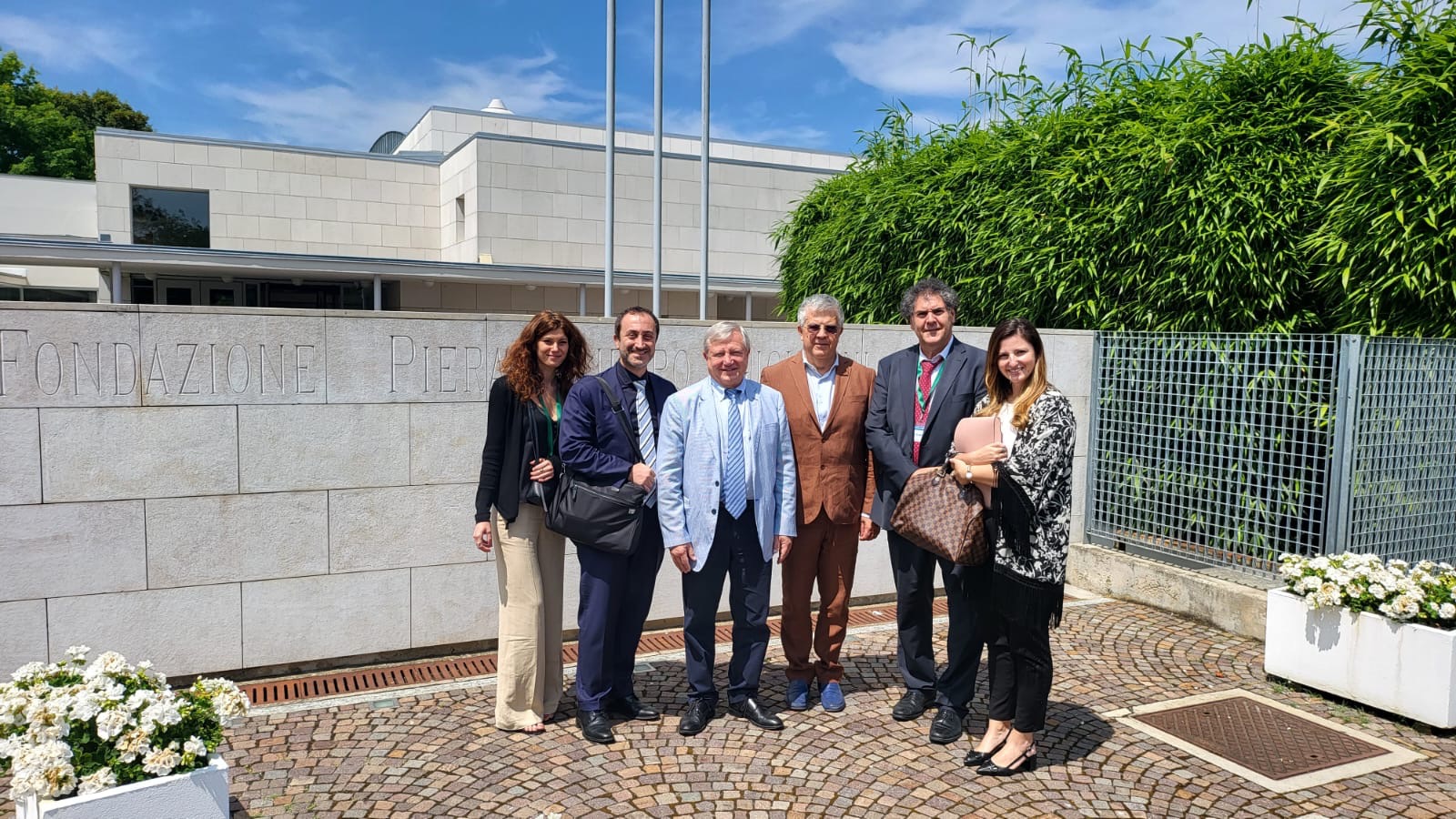
A goodbye until the next event to discuss again the issues that are of interest to more and more health workers, regardless of latitude, thanks also to the continuous growth of scientific progress linked to the strong interest of passionate researchers who only need to work together better by joining efforts with the ultimate aim of improving patients’ quality of life.
Our thanks go to the companies whose participation made the Congress possible, to the Ferrero Foundation that hosted it, to the President of the Congress Giancarlo Rando, and to the organising secretariat (GC. Congressi di Roma) for their seriousness and fruitful efforts to the general satisfaction of all.
The ‘Proceedings’ of the event are available to all on the site: www.ITALF.org
Dr. Sandro Michelini
ITALF president
Alba (CN) July 1, 2023






